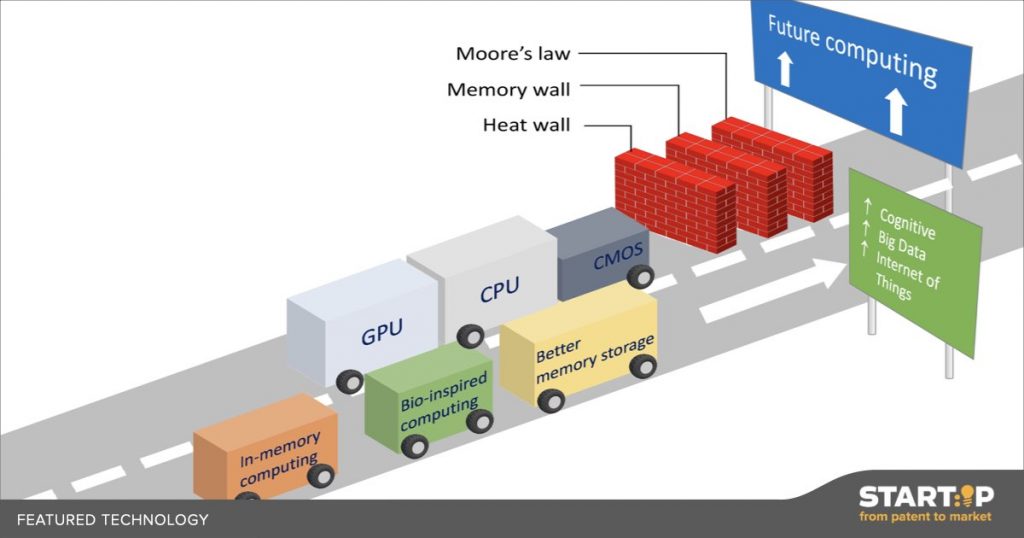It is becoming more difficult to increase computing speed, but a solution to this that is gaining great interest is computing “in-memory” – processing within memory arrays rather than separate processing arrays. Even within in-memory computing, new solutions are required to process faster. This technology is a way to perform a classic computer operation (XOR) faster in-memory.
START:IP
Technology Abstract
Faster Computing in Memory
Enhancing Computing Speed for In-Memory Computation
Bookmark9
In-memory computation is a fascinating new area of computing research, gaining much interest as we begin to reach a plateau in computational speeds. A major limitation in computing speed is that data must be transferred from storage elements (i.e. memory arrays) to processing elements. Currently, processors have advanced so much that they can run faster than the data can actually get to them! In-memory computation is a way to get around this problem, by performing at least some processes within the memory array itself – whereby so-called “memristors” can act as both storage and computing elements. The best way to perform in-memory computation is now an intense area of research, and this technology has invented a way to perform XOR operations with memristors. XOR operations are commonly used in computing – they are a simple way of computing “either or” questions. As a simple analogy for an XOR operation, let’s say there is a party that I am thinking of attending, but only if either Jack or Jill is going. There are many possible outputs – if neither of them go, I won’t; if either one of them goes, I will; or if both of them go then I won’t (because they’re annoying when they are together!). Classic computing would ask each of these questions individually – is Jack going? Is Jill going? Are they both going? But this technology would be able to ask all these questions at once. By performing these so-called logic gates in one computational cycle, rather than sequentially, the computation is much faster. In essence, this is a technology to perform fast processing with memristors, enhancing in-memory computational capabilities, and overall improving computing speeds.
If you click the button and fill out the form to be “matched” with a technology, we will introduce you to the scientist / transfer manager of the respective research institution. In this way, you immediately have the chance to receive more detailed information and to start discussions about a possible joint project.




